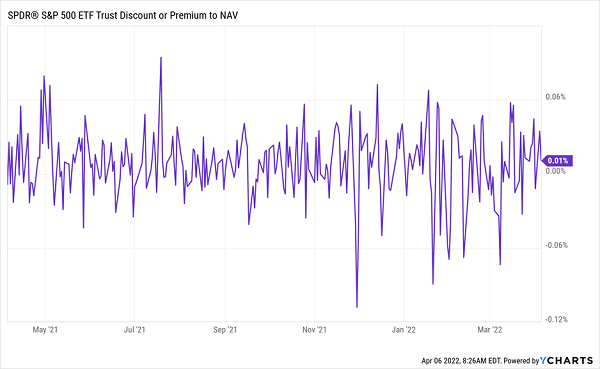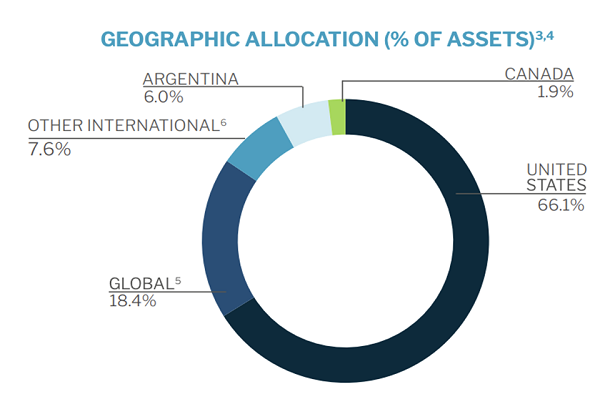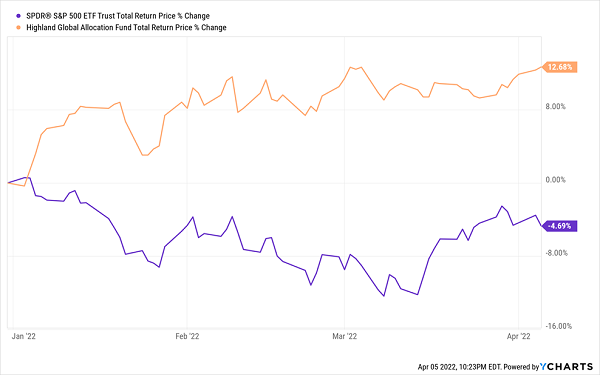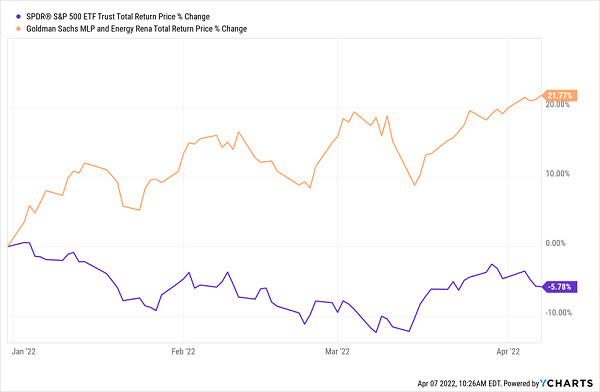One thing we love about closed-end funds (beyond the dividends: many CEFs yield 7%+ today) is the big discounts to net asset value, or NAV, that these funds hand us.
These discounts only exist with CEFs. Here’s why: CEFs typically can’t issue new shares to new investors after their IPOs, so their shares get bid up and down on the market, independent of how much their portfolios are actually worth.
These discounts can get quite wide—sometimes 20% and higher. At that kind of a discount, we’re essentially paying 78 cents for every dollar of assets the fund holds!
Our plan, then, is simple: buy when we get an unusual discount like that and then ride along as it vanishes.
That’s in contrast to ETFs, which are free to issue new shares at will, so you never get a deal on them. Take a look at the “discounts” that have been available on the most popular ETF of them all: the SPDR S&P 500 ETF Trust (SPY).
SPY Is Never Cheap

Today we’re going to dive into the four cheapest CEFs on the market, all of which trade around a 20% discount. I see all of these funds as suitable for short-term trades as their discounts close. But none are (yet) appropriate for the longer-term approach we take in my CEF Insider service.
Bargain-Bin CEF No. 1: A Global 9.8% Payer Selling for 22% Off
Let’s start with the Highland Global Allocation Fund (HGLB), which trades at a 22% discount to NAV while also yielding an outsized 9.8%.
A big reason for this is that HGLB is a young fund, having launched in 2019, so it doesn’t have enough history for CEF investors, who can be an extra-cautious bunch.
As its name suggests, HGLB spans the world, with a mix of American and foreign assets. The fund tries to combine exposure to the highest-quality oversold stocks and top income-producing corporate bonds, getting you one-stop access to equity and debt.

Source: Highland Funds
This diversification is paying off; in a year when US stocks are struggling, HGLB is up, thanks to its focus on snapping up assets that are way oversold but still offer high income streams.
Way Ahead of the Market

Now let’s come back to the US (and specifically to the energy patch) with …
Bargain-Bin CEF No. 2: A Smart Way to Play Surging Oil (at a 21% Discount)
Next, let’s discuss the Neuberger Berman MLP and Energy Income Fund (NML), which trades at a 21% discount to NAV and is doing even better than HGLB in 2022.
NML Is Soaring

The big discount is in part thanks to its energy investments, including stocks like Targa Resources Corp. (TRGP), Williams Companies (WMB) and ONEOK (OKE), which are flourishing on strong oil demand and inflation.
There is a catch: NML’s 3.8% yield is a bit lower than those of other CEFs, but since the fund recently hiked its dividend and its profits are strong—its total NAV return (including dividends NML has collected from the stocks it holds) is up 27.5% this year—we can expect investors who buy now to see higher dividends in the future.
Bargain-Bin CEF No. 3: Big MLP Income Without the Tax Hassle
That brings me to our third fund, the Goldman Sachs MLP and Energy Renaissance Fund (GER), which has a somewhat better 5.7% yield. GER also invests in energy, focusing more on pipeline-owning master limited partnerships (MLPs) than NML.
MLPs are “pass-through” investments that collect fees from users and pass them to us as dividends. GER’s top holdings include Magellan Midstream Partners (MMP), Energy Transfer LP (ET) and Enterprise Products Partners (EPD).
This 20%-discounted fund is also crushing the market, thanks to its energy focus and the value of the MLP-derived income it’s getting in a time of volatility in pretty well everything else but energy.
More Profits in a Down Market

One final note with this one: you may have heard that investing in MLPs results in you receiving a complicated K-1 package for reporting your dividend income at tax time. With GER you avoid this and get a simple Form 1099 instead.
Bargain-Bin CEF No. 4: An Inflation Hedge With a 7.8% Payout
Finally, there’s the Highland Income Fund (HFRO), which has a 21% discount and a 7.8% dividend yield.
HFRO focuses on real estate, which is a proven inflation hedge and makes up about half of the fund’s portfolio. HFRO also holds a variety of other rent-yielding investments. As you can tell, it puts income first and, as a result, has a solid dividend that management increased in 2017 and has held steady since.

Source: Highland Funds
This is a fund that protects against market drops, with an 8.8% total return year to date, thanks to reliable income from its real estate and debt holdings, while the S&P 500 has fallen.
Income Alert: 4 of My Best CEF Picks Yield 7.5% (and Are Primed to Pop 20%+)
Buying at big discounts like these is the key to pocketing strong profits in CEFs. Here’s how our simple, discount-driven strategy works:
- Step 1: Buy a CEF trading at an unusual discount and begin collecting its outsized dividend payout (as mentioned, 7%+ dividends are common among CEFs).
- Step 2: Wait for your discount to disappear, catapulting the price higher.
- Step 3: Collect your 7%+ dividends the entire time!
I’ve uncovered 4 CEFs trading at such deep (and frankly bizarre) discounts that I’m expecting them to disappear (and in some cases flip to premiums), flinging their share prices higher as they do. I’m calling for 20%+ price gains for each of these funds over the next 12 months.
Your average dividend yield? 7.5%! And ALL of these funds pay you monthly, right in line with your bills. The names of all 4 are waiting for you. Click here to learn more about my CEF investing strategy and get access to these 4 smartly run income funds.
